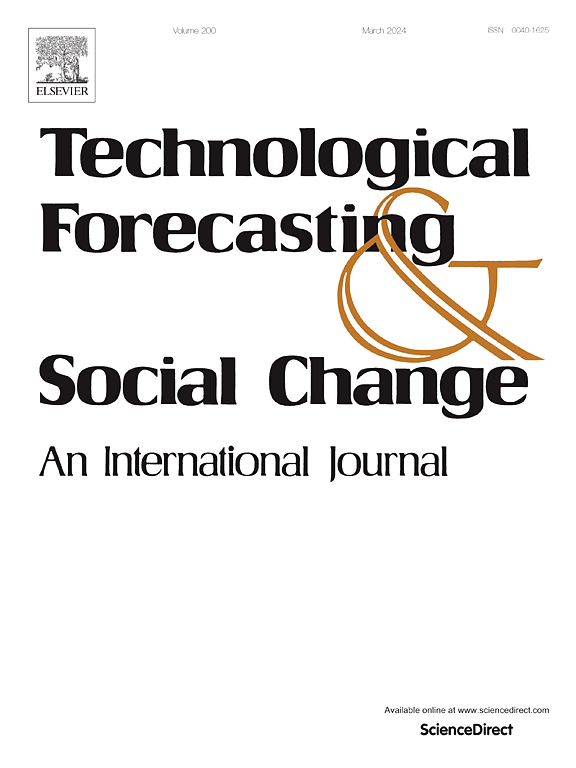Did the main functional area planning promote green development in China?
IF 13.3
1区 管理学
Q1 BUSINESS
Technological Forecasting and Social Change
Pub Date : 2025-08-04
DOI:10.1016/j.techfore.2025.124313
引用次数: 0
Abstract
Issued in 2011, MFAP was China's first national plan to exploit its territorial space and support its transition to sustainable development, yet whether MFAP has actually translated into green development remains uncertain. To address that, we collected data for 270 cities in China and investigated MFAP's impact on their green technological progress and air pollutant emissions, by using a difference-in-difference (DID) analysis. Our results showed that MFAP was able to enhance regional green technological progress in Optimized development zones (ODZ), but not so in Key development zones (KDZ). Besides, investment in science and technology in addition to a changed land use pattern are two mechanisms by which MFAP could promote green technological progress. However, our results also revealed that, unlike for SO2, MFAP did little to reduce the emissions of other common air pollutants, namely PM2.5 and O3, especially in KDZ. Our findings suggest China's government should pay more attention to green economic development in KDZ and other potential problems there (e.g., life quality and welfare of rural residents and migrant workers) when pursuing its ambitious green transformation. In particular, policymakers should prioritize economic incentives in KDZ (e.g., more funding to spur innovation and tax relief for green industries) and integrate MFAP with stricter pollution controls to pursue holistic green development. The theoretical contributions of this study lie in first drawing an analogy with green policy instruments to show that spatial planning can also contribute to green technological progress and pollution control, and then in further analyzing the underlying mechanisms in terms of scale, composition, and technique effects. Its practical contributions lie in demonstrating the limitations of MFAP for mitigating air pollution in China, thus underscoring the need for crafting region-specific policies.
主体功能区规划是否促进了中国的绿色发展?
MFAP于2011年发布,是中国第一个开发国土空间并支持其向可持续发展转型的国家规划,但MFAP是否真正转化为绿色发展仍不确定。为了解决这一问题,我们收集了中国270个城市的数据,并使用差分法(DID)分析了MFAP对其绿色技术进步和空气污染物排放的影响。研究结果表明,优化开发区(ODZ)对区域绿色技术进步具有促进作用,而重点开发区(KDZ)对区域绿色技术进步没有促进作用。此外,科技投资和土地利用格局的改变是MFAP促进绿色技术进步的两种机制。然而,我们的研究结果还显示,与SO2不同,MFAP对减少其他常见空气污染物(即PM2.5和O3)的排放几乎没有作用,尤其是在KDZ。我们的研究结果表明,中国政府在实施雄心勃勃的绿色转型时,应更多地关注开发区的绿色经济发展和其他潜在问题(如农村居民和农民工的生活质量和福利)。特别是,政策制定者应优先考虑经济激励措施(例如,为刺激创新提供更多资金和为绿色产业减免税收),并将MFAP与更严格的污染控制相结合,以追求整体绿色发展。本研究的理论贡献在于首先通过对绿色政策工具的类比,揭示空间规划对绿色技术进步和污染控制的促进作用,然后进一步从规模、构成和技术效应等方面分析其潜在机制。它的实际贡献在于展示了MFAP在缓解中国空气污染方面的局限性,从而强调了制定区域具体政策的必要性。
本文章由计算机程序翻译,如有差异,请以英文原文为准。
求助全文
约1分钟内获得全文
求助全文
来源期刊
CiteScore
21.30
自引率
10.80%
发文量
813
期刊介绍:
Technological Forecasting and Social Change is a prominent platform for individuals engaged in the methodology and application of technological forecasting and future studies as planning tools, exploring the interconnectedness of social, environmental, and technological factors.
In addition to serving as a key forum for these discussions, we offer numerous benefits for authors, including complimentary PDFs, a generous copyright policy, exclusive discounts on Elsevier publications, and more.

 求助内容:
求助内容: 应助结果提醒方式:
应助结果提醒方式:


